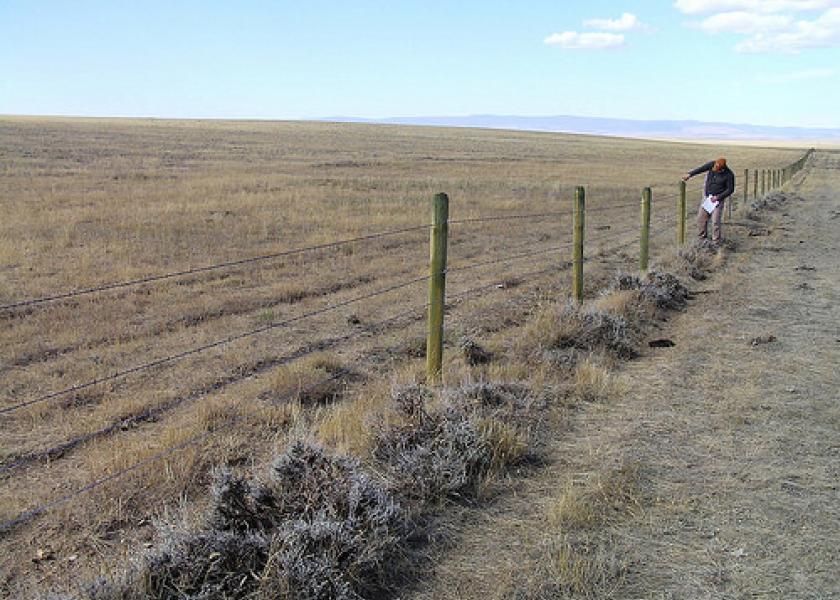New Fences Keep Cattle In, But Allow Elk & Wildlife to Move Freely

Long-time rancher John Nunn’s land is near a route where pronghorn migrate. His ranch is surrounded by woven fences, and although the pronghorn can sometimes find a way through, he wanted to ease access for them.
"We found they would go a certain path, and we didn’t want to jeopardize that," Nunn said.
Nunn is one of several producers in Wyoming who recognized that the existing woven wire and 5- to 6-wire barbed fences prevented pronghorn, deer and elk from freely moving and migrating through their lands. That’s when he looked into wildlife-friendly fencing as a replacement for the fencing that was put on his land before he owned it.
Traditional fences can injure or kill pronghorn, deer, elk and other wildlife when they run into them or become entangled in them. Plus, repairing a fence damaged by wildlife is costly and time consuming.
Nunn and others applied for assistance from USDA’s Natural Resources Conservation Service (NRCS) to help them replace their existing wire fence into a wildlife friendly fence with funding from the Environmental Quality Incentives Program, one of the conservation programs of the 2014 Farm Bill.
These new fences allow pronghorn antelope and other big game to pass through the fence without the risk of getting tangled in the wires. The fence wire spacing allows pronghorn to crawl under the fence, while the lighter-on-their-feet deer and elk can easily jump over the fence – all with minimum risk of injury.
Meanwhile, these fences still keep cattle inside.
NRCS helps ranchers install these fences because they help wildlife migrate safely while also preventing future cost burdens of having to replace fences.
Ultimately, 29,000 feet of woven and five-strand barbed wire fence was replaced with wildlife-friendly fence on his land, vastly improving big game movement on or through the ranches.
"I wanted to antelope to roam at will," Nunn said. Now, instead of bunching up in one corner, they have the freedom to access more routes."
In addition to the migration route improvement, the two fence-replacement projects benefit overall rangeland health, by allowing animals to more readily find forage during winter months, and reducing browsing pressure on forbs and shrubs.
This September, USDA is celebrating the many opportunities and benefits provided by conservation by highlighting stories like this one. To get started with NRCS, visit your local USDA Service Center or www.nrcs.usda.gov/GetStarted.
Source: United States Department of Agriculture







